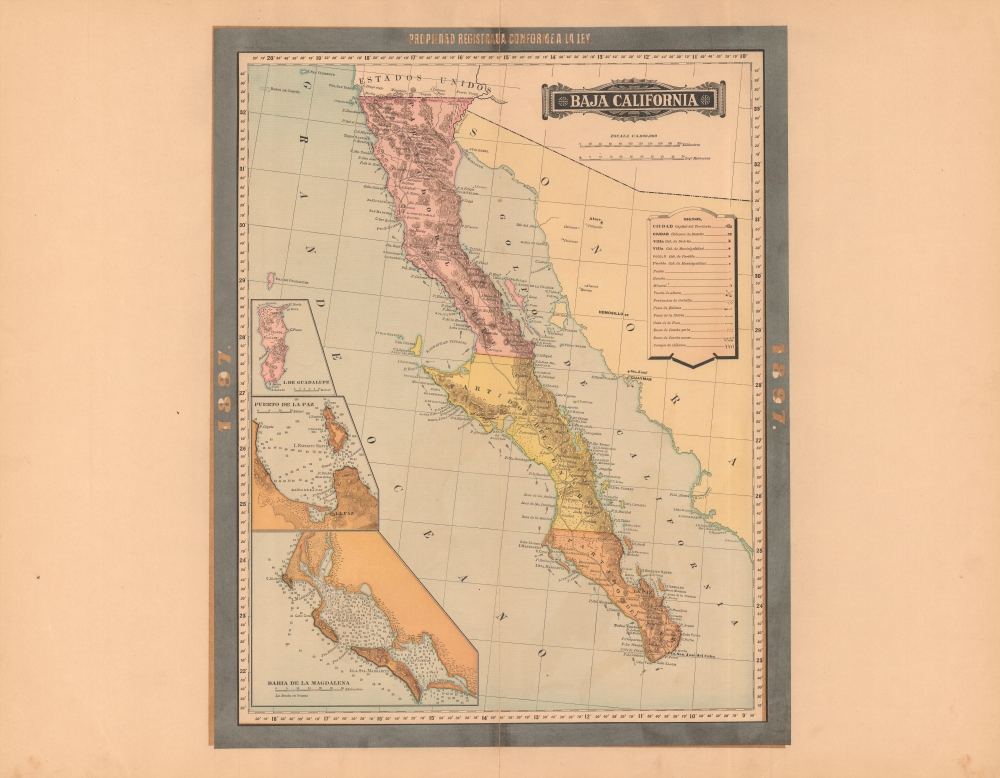1897 Garcia Cubas and Vega Map of Baja California, Mexico
BajaCalifornia-garciacubas-1897
Title
1897 (dated) 19 x 15.5 in (48.26 x 39.37 cm) 1 : 3000000
Description
A Closer Look
Coverage embraces Baja California from Tijuana to Cabo San Lucas, as well as the adjacent Gulf of California. Insets detail the important Bahia de la Magdalena, the Puerto de la Paz, and I. de Guadalupe - this last being something of a mystery as the island is mostly arid and near uninhabited. Roads are noted throughout, although most commerce at the time was maritime. Banks of mother-of-pearl, pearls, and other maritime treasures are noted. Much of the southern peninsula is dominated by orchil production - a rare red dye made from lichen.Publication History and Census
This map was published in Mexico City in 1897 by Vega y Cie. It was printed by Lit. Montauriol Sucs., Mexico City. The map is based on the 1887 work of Antonio García Cubas. It was updated with additional border work for the 1897 issue of theAtlas Geográfico de los Estados Unidos Mexicanos. The atlas is represented in several instructional collections, but extremely scare on the market. The individual maps, likewise, are scarce to the market.Cartographer
Antonio Garcia y Cubas (July 24, 1832 - February 9, 1912) was a Mexican cartographer, writer, engineer, and geographer active in Mexico City in the second half of the 19th and the early 20th centuries. He is considered Mexico's first great geographer. Garcia y Cubas was born in Mexico City. He was orphaned at birth and was raised by is aunt. When he turned 18, he enrolled in the Dirección General de Industria, a government sponsored technical school. There he studied engineering and geography, which he further pursued at the Colegio de San Gregorio, Colegio de Ingenieros. He graduated with honors in geography and from 1856, became a member of the Sociedad Mexicana de Geografía y Estadística. His geographical work earned him the Order of Guadalupe, a Mexican second empire honorific, directly from the Emperor Maximillian. He published several atlases, including his important Atlas Geográfico, Estadístico e Histórico de la República Mexicana, and multiple decorative chromolithograph Atlas Pintoresco e Históricos covering Mexico, Cuba, Spain, and elsewhere. Today his work is scarce and highly desirable. More by this mapmaker...

